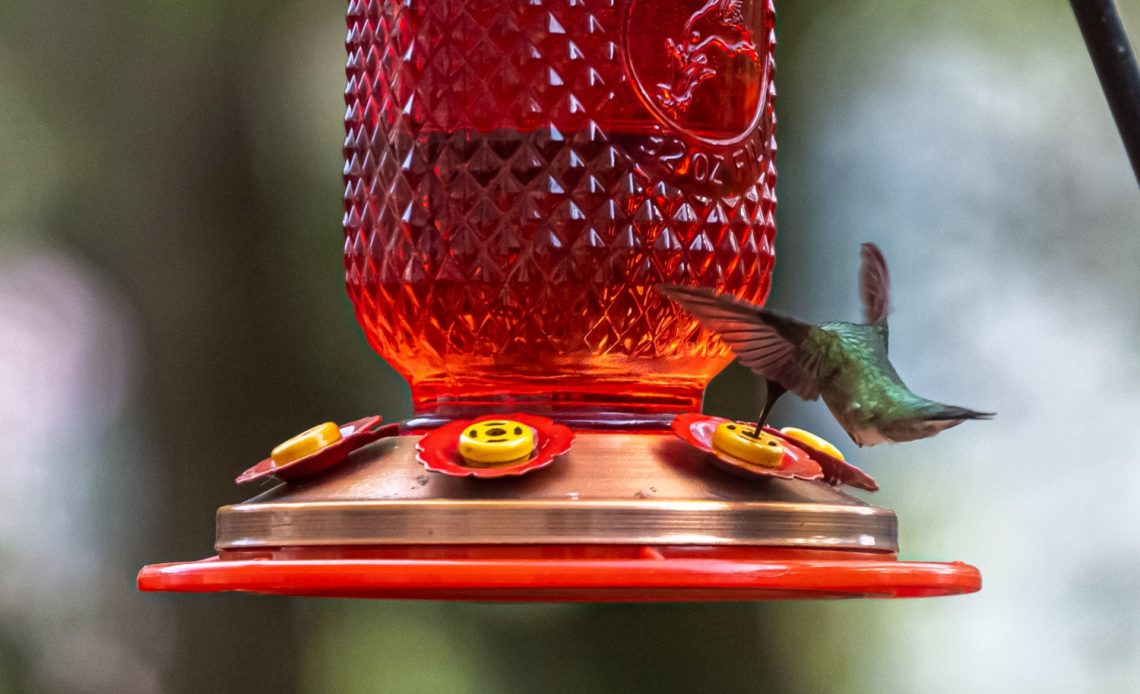

We’re here to help! Wild Yards is a completely free website that is 100% dedicated to helping you create a wildlife-friendly, sustainable yard. Read more
WildYards is reader-supported. When you buy a product through a link on our site, we may earn a comission. Every product is independently selected by our (obsessive) editors and our reviews are unbiased and objective. Read more about our mission or our privacy policy.
We’re always anxious whenever we hang up a new hummingbird feeder in our garden. Will the hummingbirds find it this year when they venture through our yards during their migration? Hummingbirds are actually pretty good at finding feeders, even the new ones. In a sense, they have to be, because their rampant metabolisms mean they have a high demand for food. Knowing how to find feeders is essential so they don’t go hungry. But how do hummingbirds find feeders, anyway?
Hummingbirds are drawn to the vibrant colors of feeders, which quickly attract their attention. Hummingbirds also have excellent spatial memory, allowing them to zero in on feeders they’ve visited in previous years.
How do hummingbirds find feeders so quickly?
One of the things we love most about springtime is getting to pick out a new hummingbird feeder for our backyards.
Somehow, hummingbirds always manage to find their way to our new feeders. And they never seem to have any trouble relocating the old ones.
But how is it that hummingbirds are so good at finding their feeders? Let’s take a look!
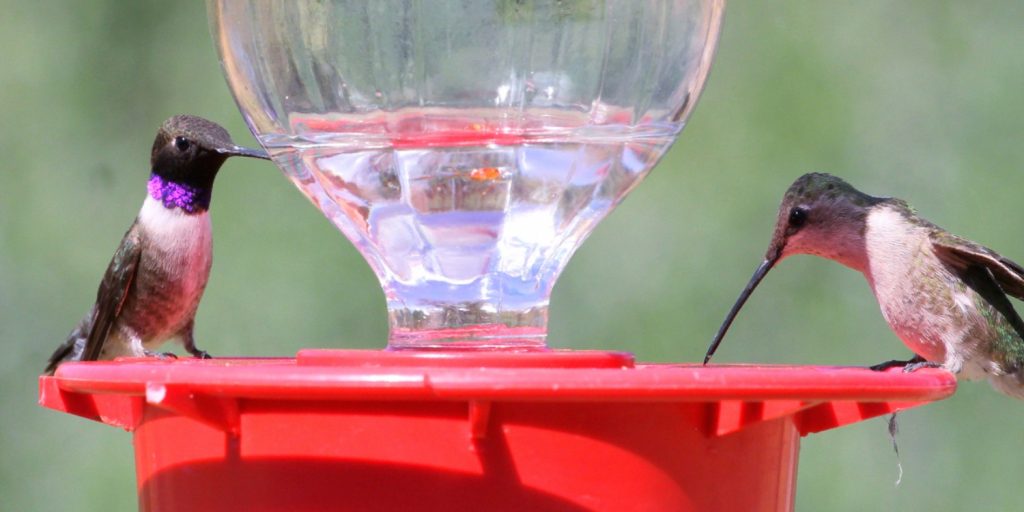
Hummingbirds are drawn to vibrant colors
One of the main reasons why hummingbirds are able to locate feeders so quickly is because they’re often very vibrantly colored. In addition to being excellent fliers, hummingbirds also have great eyesight.
Hummingbirds are drawn to bright, flashy colors, and they like some colors better than others.
Red is the traditional color for hummingbird feeders, but they’re also attracted to orange, yellow, and pink.
Some people mix red food dye into their homemade hummingbird nectar recipe to make sure it’s easy for the birds to spot.
There is no research that proves that food coloring is safe for hummingbirds. According to hummingbird rehabbers, there’s actually anecdotal evidence that hummingbirds that have consumed nectar with food dye are more susceptible to diseases and have a higher mortality rate than those that have not.
We strongly advise against using food dye in your hummingbird food. The color of the feeder itself should be bright enough to capture your local hummingbirds’ attention on its own
Additionally, there’s some speculation that hummingbirds can smell nectar and that this also helps them locate feeders. Even though hummingbirds can smell insects, it’s believed that their ability to smell flowers is actually pretty poor.
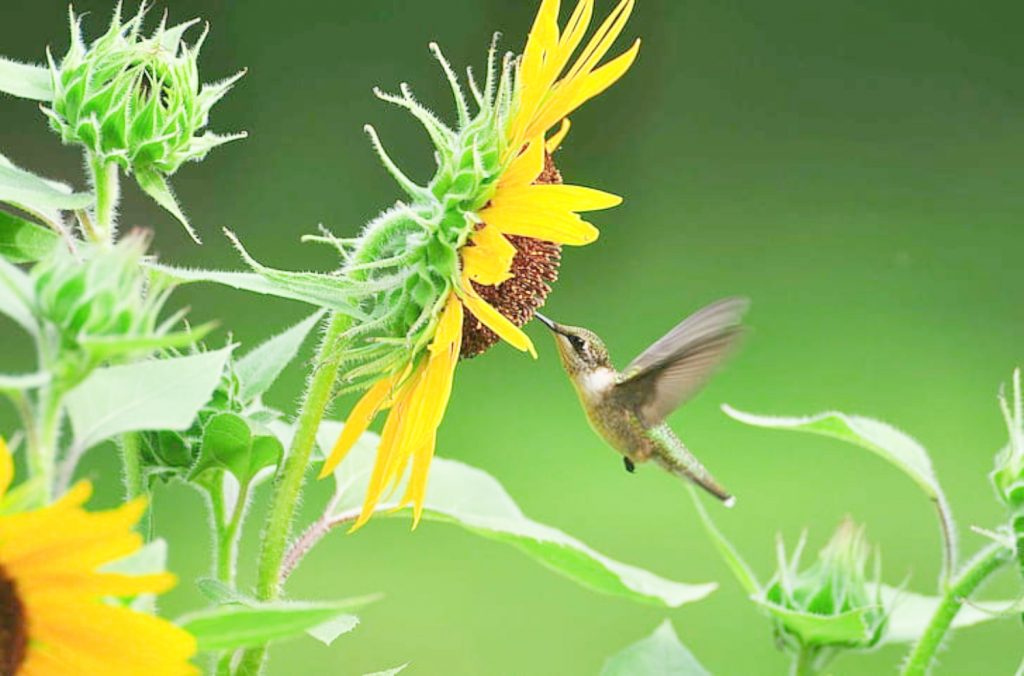
Hummingbirds return to the places they hatched
Like many other birds, hummingbirds tend to return to the places where they hatched. They also tend to build their nests near their food sources.
Hummingbirds need ready access to food, especially if they have young mouths to feed. So mother hummingbirds are more likely to build their nests within range of hummingbird feeders.
Building their nests in close proximity to feeders serves another purpose.
Male hummingbirds are very territorial. By keeping their nests within their male’s range, female hummingbirds can care for their eggs in safety, as their male vigilantly defends the territory from other males and predators.
If you hang up hummingbird feeders year after year, then there’s a good chance some hummingbirds will return to raise their families nearby.
When the baby hummingbirds that hatched in your backyard grow up, they’ll likely return to your feeders, raise their families nearby, and so the cycle continues!
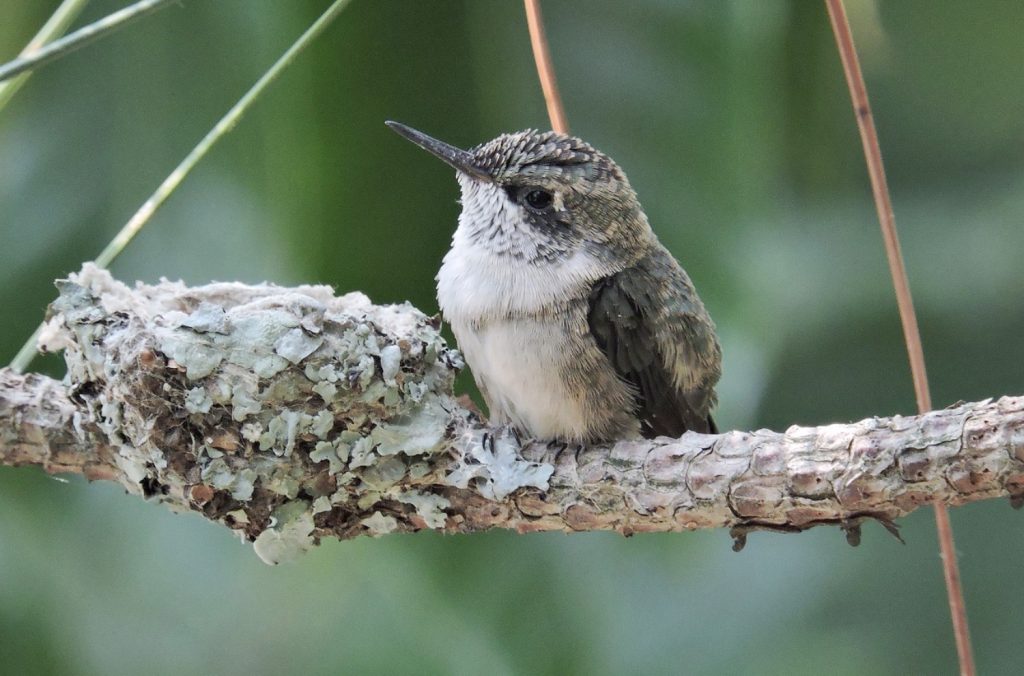
Hummingbirds return to feeders they’ve visited previously
Hummingbirds don’t just return to their homelands, they also make a habit of checking out feeders that they’ve found in previous years. Hummingbirds have excellent spatial memory. Sure, they’re impressive fliers. But they’re amazing navigators as well!
As hummingbirds migrate, they make regular pitstops to refuel. They’re always on the lookout for feeders so they can meet their energy needs.
Once they locate feeders, they’ll tuck that knowledge away and come back to them on their returning journey.
Hummingbirds have incredibly high metabolisms. They can only go a few hours without eating. It’s critical that they have a reliable food source so they can meet their energy needs.
Knowing where to find food is crucial to the hummingbird’s survival. Once they track down a feeder, they aren’t likely to forget where it is!
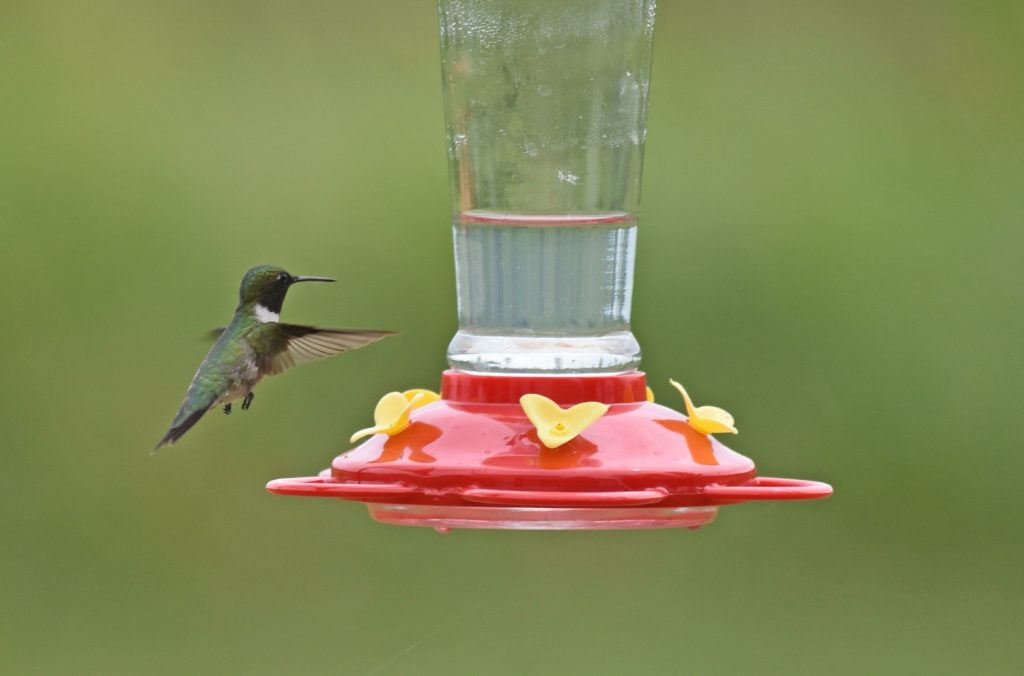
Hummingbirds may spot other pollinators
Interestingly, another reason why hummingbirds are able to locate new feeders so quickly is not because they smell them, but because other pollinators smell them!
Research currently suggests that hummingbirds don’t have much of a sense of smell. But other pollinators, including honeybees and wasps, do. They can smell sucrose as they’re flying by, making it easy for them to track down hummingbird feeders.
Since hummingbirds compete with bees and wasps for food sources, the birds may notice these insects hovering around your feeder, and decide it’s worth checking out.
Once the hummingbird realizes the feeder is a great source of food, it may become territorial of it, chasing the bees and wasps away. Some hummingbirds get so defensive of their feeders that they will sit on them for hours at a time.
Likewise, hummingbirds may find your feeders because other hummingbirds have gotten there first.
If a hummingbird sees another hummingbird hanging around a certain spot, it won’t be long before it flies in to investigate. Hummingbirds will chase each other all over your backyard to protect their feeders.
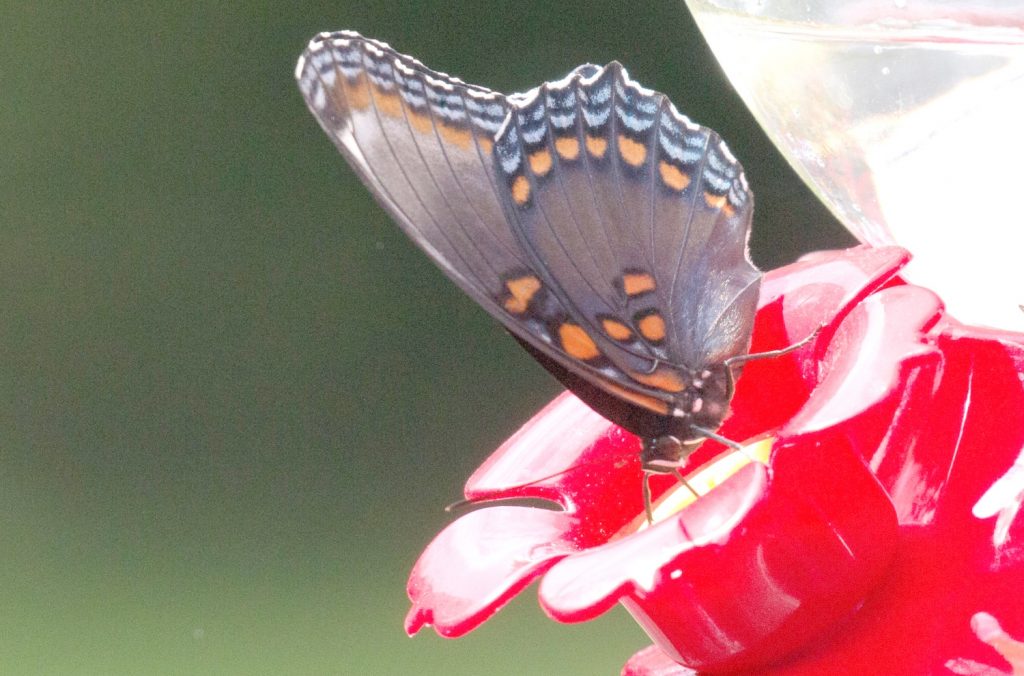
Hummingbirds are foragers
When a hummingbird enters a new place, it will take some time to explore.
This helps them track down food sources, obviously. But it also enables them to find suitable hiding places in case they need to protect themselves from predators. It also allows them to scout out good nesting sites.
Hummingbirds are foragers by nature. They enjoy a variety of foods, including insects and nectar from many different flowers. Foraging allows them to meet all of their nutritional needs, so they get plenty of protein, fats, and carbs.
Because hummingbirds are always foraging for new food sources, this can lead them to your feeders.
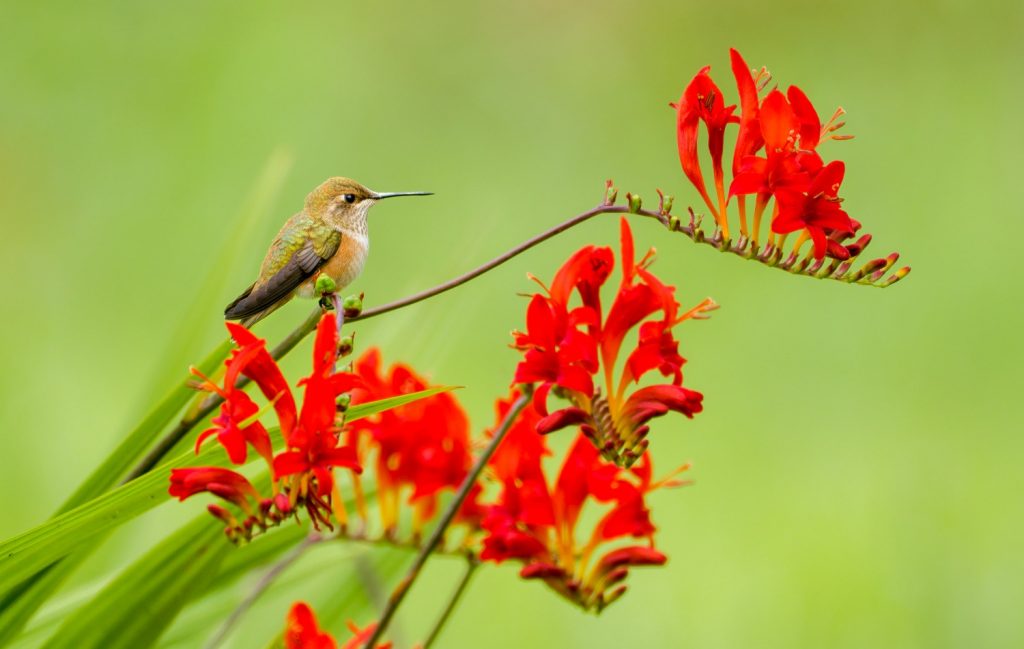
How can you make sure hummingbirds find your feeders?
If you want to make sure your neighborhood hummingbirds won’t have any trouble finding your feeders, there are several things you can do to help.
Check out these easy tricks for making sure hummingbirds notice your feeders.
Choose vibrantly colored feeders
It can be tempting to purchase hummingbird feeders based on what you find attractive. But if you want hummingbirds to actually visit your feeders, you need to choose some that they will find attractive.
If you just can’t resist buying a cute hummingbird feeder, even though you know it’s one they aren’t likely to find, there’s no reason not to get it. Just be sure to find another feeder that they will like, and purchase it as well.
Remember, hummingbirds are attracted to red, orange, yellow, and pink. So try to choose feeders that come in these colors. The brighter they are, the better.
You should also choose feeders that have perches. Giving hummingbirds a chance to rest while they eat will help them get the most out of the nectar they drink.
Install several feeders
Hummingbirds are foragers, flying from one place to another in search of food. The more feeders you have hanging on, the greater the chances the hummingbirds will find them.
This will also help prevent food aggression once the birds do find their feeders.
If you have several feeders for hummingbirds to choose from, they’re less likely to get territorial with each other, which can help prevent them from getting injured.
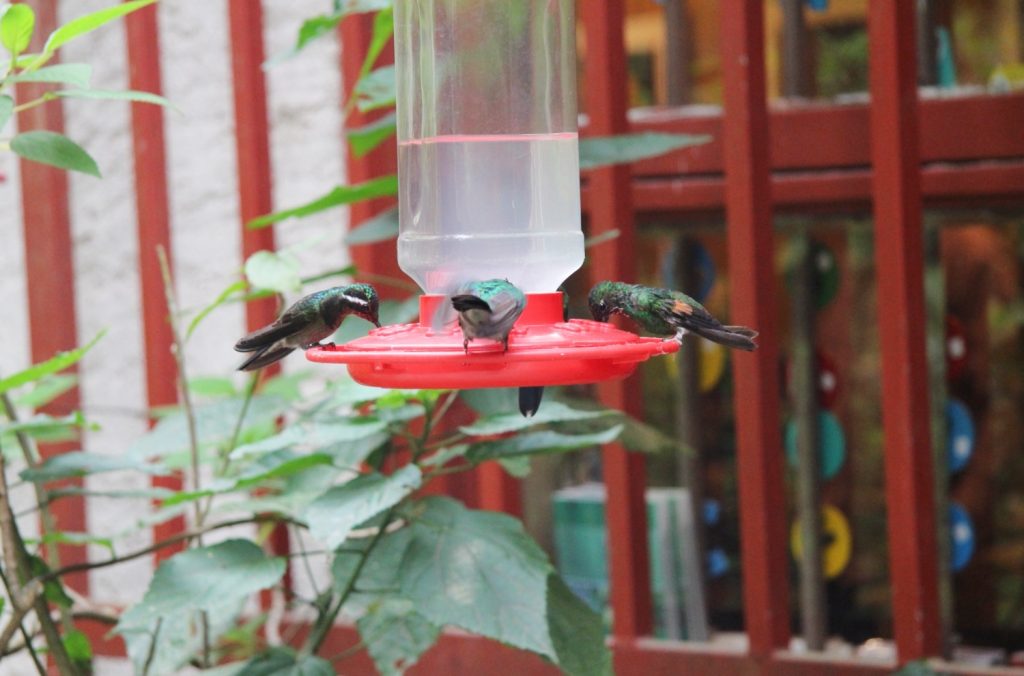
Place the feeders near flowers
One way to make it easy for local hummingbirds to track down your feeders is to hang them up near flowers.
Hummingbirds visit a variety of flowers, but they’re especially attracted to bell-shaped flowers — and, again, they tend to prefer flowers that are red, orange, yellow, or pink.
If you have the room for it, consider planting a flower garden filled with native plants that hummingbirds, and other pollinators, are sure to enjoy.
This will provide your hummingbirds with an additional food source, as well as shelter and nesting materials, increasing the likelihood that they’ll return to your backyard for many seasons to come.
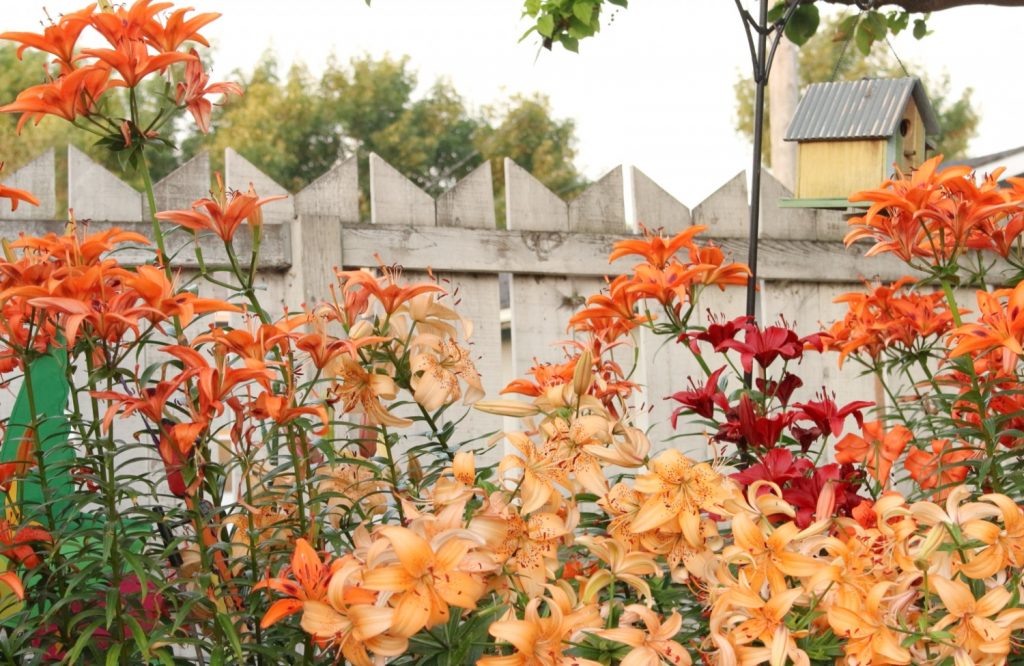
Clean feeders often
Rancid nectar can kill hummingbirds. Even if the nectar itself doesn’t cause a problem, if the sugar water ferments, the whole feeder turns into a breeding ground for bacteria.
To keep your hummingbirds healthy so they can return to your feeders every season, be sure to clean your feeders regularly.
Take the feeders down every week, wash them with soap, rinse them by pouring boiling water over them, and allow them to air dry before filling them with new food.
You should also replace the hummingbird water every 3 to 4 days to prevent it from fermenting.
Use only white sugar to make your hummingbird water recipe. Hummingbirds cannot digest honey, molasses, or brown sugar. Additionally, these ingredients make the nectar ferment much more quickly.
You can also set out a dish of grape jelly (made with sugar, not artificial sweeteners), as well as slices of watermelon and orange. Your hummingbirds will love having all these options to choose from!
Installing feeders is a great way to support hummingbirds
Hanging up a few feeders in your backyard is such an easy way to support hummingbirds and encourage more of these amazing creatures to visit your garden.
By choosing the right feeders, placing them in the right locations, and caring for them properly, you can ensure migrating hummingbirds continue to visit your property in the coming years.
